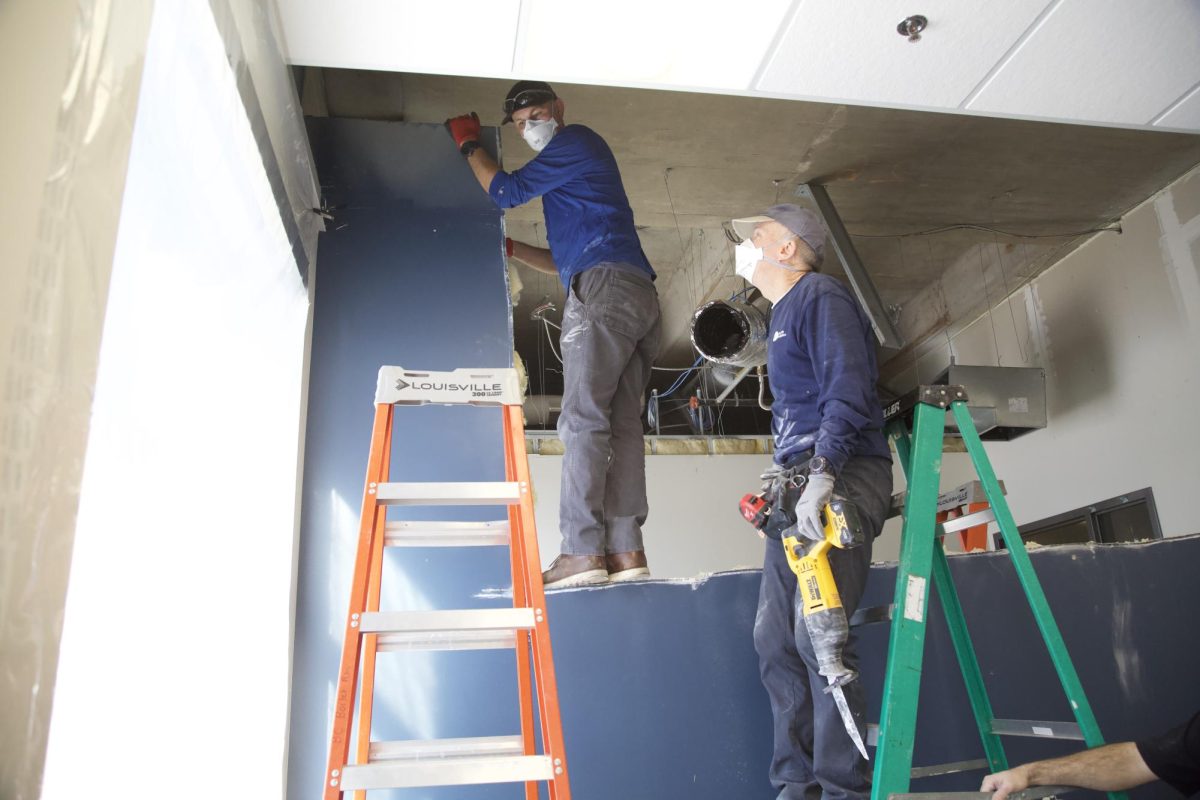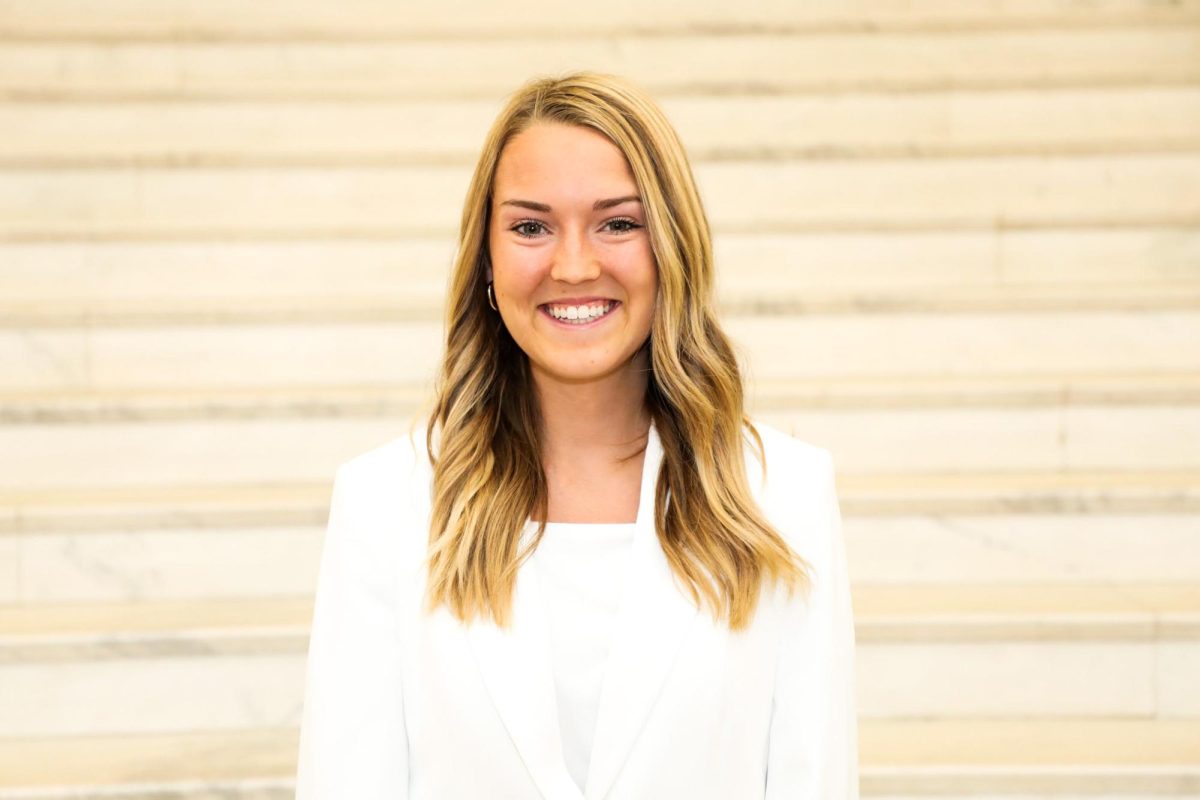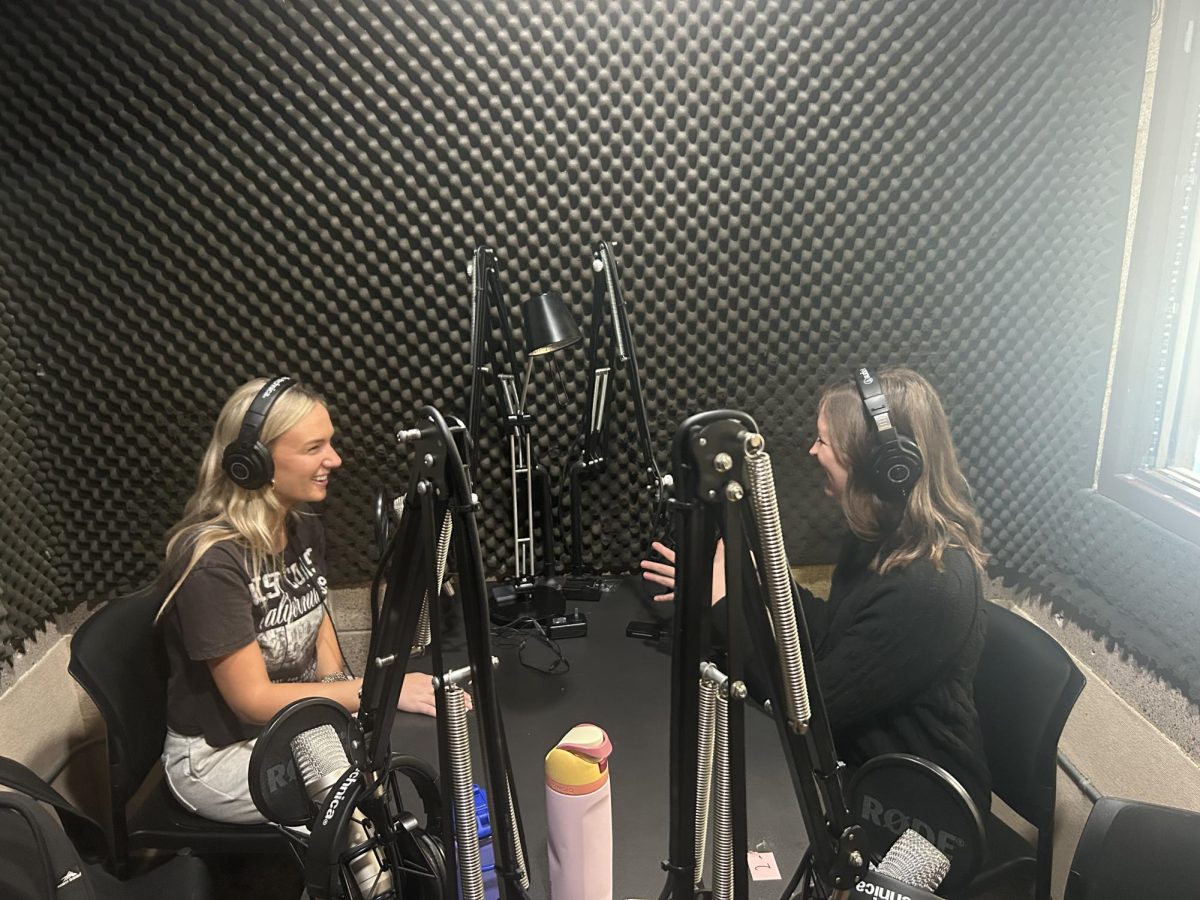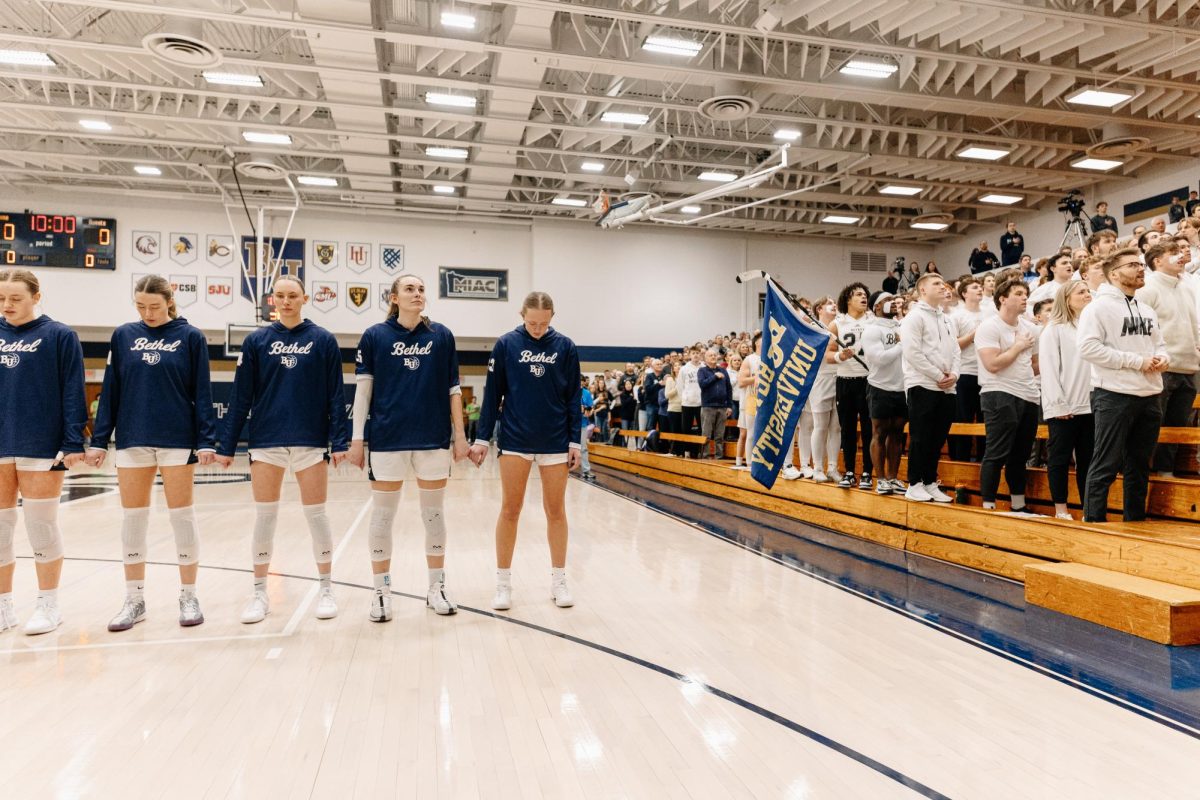Departments are preparing to relocate as the details of a $40,000,000 renovation settle.
By Christine Schuster
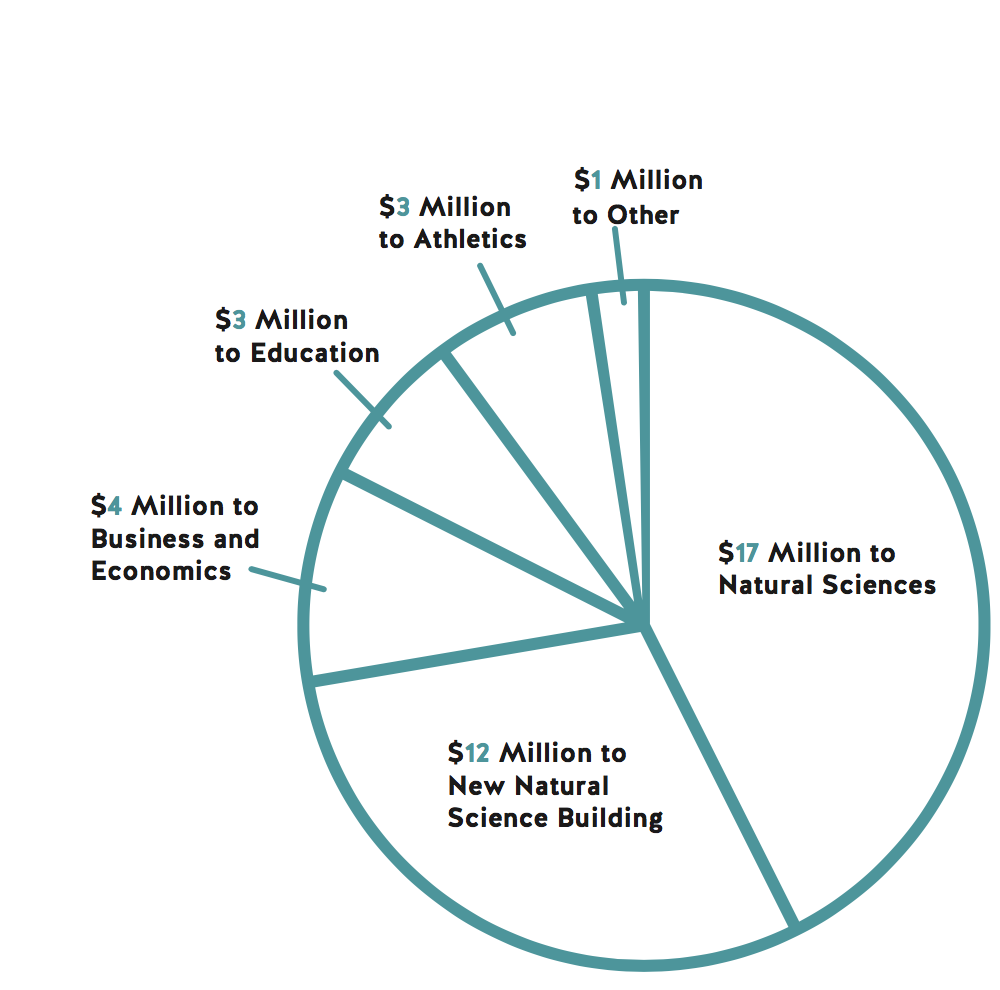 Bethel’s current $40 million dollar capital campaign will significantly change the departmental layout on campus. The funds will primarily be used to build an updated and expanded facility for the natural sciences.
Bethel’s current $40 million dollar capital campaign will significantly change the departmental layout on campus. The funds will primarily be used to build an updated and expanded facility for the natural sciences.
“This has been promised for decades and we are finally planning it,” Carole Young, Dean of Natural Sciences, said.
The natural sciences department will expand to occupy the entire Academic Center (AC) building. Additionally, an expansion will be built where the president’s parking lot is currently located.
The expansion will include a student lounge with windows facing Lake Valentine. BWBR Architecture is designing the expansion. Previously, they’ve worked on projects at the University of Minnesota and the State Capitol.
“I couldn’t be happier with the arrangement,” Jay Barnes, Bethel President, said. “I’d lose my parking spot today if it meant we could start construction tomorrow.”
Out of the $29 million that will go towards the development of natural sciences, only around $3 million will be used to relocated the displaced departments.
It has not been explicitly stated in the plans that the departments in the AC will be moved to seminary, but the townhouse buildings appear the only other option without the money to build a new facility.
“We aren’t digging in our heels and saying we won’t leave,” Chris Gertz, professor of history, said.
The current capital campaign is a piece of Bethel’s complicated history of master planning. Gertz recalls the earliest versions of the plan being discussed around 2010, involving a much larger budget to construct new buildings for sciences and seminary. The plans changed when effects of the economic crisis hit and Bethel’s enrollment declined significantly.
In the middle of drafting a new plan, a donor purchased the Anderson Center as a surprise gift. This met some of Bethel’s space needs but it wasn’t the appropriate space for College of Arts and Sciences (CAS) undergraduate classes. It was decided that CAS students would not be sent to the Anderson Center.
However, the Anderson Center will play an important role in Bethel’s upcoming changes. Upon leases expiring, Seminary will be relocated as well as the offices currently occupying the Robertson Center.
In the planning during recent years, it has become apparent that “the sciences are woefully and dramatically underequipped,” Marion Larson, co-chair of the english department, said. “Those are some of our strongest programs but that lab space is totally inadequate. They’ve never had the space they need.”
The capital campaign and design offers significant improvements for the natural sciences and business departments. For the humanities and arts departments, there is uncertainty about what the transition will bring.
“From my experience at Bethel, we have been building, building, building,” Gertz said. “What we haven’t done is grow endowment. Wealthier institutions, like Wheaton, have a huge, huge endowment that helps cushion financial blows because they get income from that endowment.”
The RC office space will transform into a new space for the business and economics department. Around $4 million will be used for this transition and this portion of the campaign has been raised. The new department space will officially open in the fall of 2018.
Susan Brooks, Chair of the English Department, expressed concern that there will not be enough money to give the humanities a state-of-the-art space. Brooks said that no one is pretending that the money they are hoping to raise is enough to meet all the needs on campus.
“The societal pressure is so strong to pick a quote ‘practical major’,” Larson said. “We (Bethel) are going to have to be willing to push really hard against that. We are already potentially caving into that by providing what I imagine will be a lovely space for the business department. Ditto with science.”
Humanities and arts faculty members are working to emphasize the need for a key part of a students’ experience to take place in the transformed seminary area. These suggestions to increase foot traffic include moving P.O. boxes, the campus store or offering unique dining options.
Brooks, Gertz and Larson all expressed concerns that the move will make the departments less visible.
“There is a risk in moving us to a place that is less visible,” Brooks said. “It’s not an insurmountable risk, but it certainly is something that we’re going to want to pay close attention to.”
The large windows and views of the lake are just a few aspects that make the seminary space appealing. The current space in the AC present numerous problems that liberal arts faculty are looking forward to leaving behind. Uncomfortably small classrooms, chalkboards, uncomfortable furniture and ventilation noise to name a few.
“Is this a moment to recenter us in a new space and find way a to make a destination that’s really vibrant?” Gertz said.
Inviting spaces and the presence of key programs seem crucial. These efforts are up against the decline of humanities nationwide in terms of enrollment.
“What happens if enrollment declines?” Gertz said. “If I were Vice President, or Jay (Barnes), I would be wondering about that. But I would also tell myself, this is not a free market, we don’t just cut programs because of demand. We have to keep programs, even though they service fewer majors, because we need them to be Bethel.”
Wayne Roosa, Chair of the Art Department, said that humanities programs are currently figuring out what their mission and value is on campus.
“We want people to feel like they belong somewhere, to know where their specific major is and housed,” Roosa said. “Identity and visibility is the goal of this whole project.”
Additional reporting by Josh Towner.


